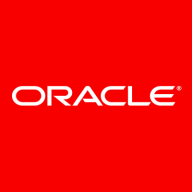

Find out what your peers are saying about Camunda, BMC, Temporal Technologies and others in Process Automation.
| Product | Market Share (%) |
|---|---|
| Nintex Process Platform | 2.1% |
| Oracle Process Cloud Service | 0.5% |
| Other | 97.4% |


| Company Size | Count |
|---|---|
| Small Business | 17 |
| Midsize Enterprise | 6 |
| Large Enterprise | 24 |
Nintex Process Platform offers no/low-code development with system integrations and efficient workflow management, ideal for complex business processes. It's known for its scalable workflows, data management through SmartObjects, and a user-friendly visual designer.
Nintex Process Platform enables organizations to automate processes with ease, supporting electronic forms, digital transformation, and seamless department collaboration. Users on SharePoint and other integrated systems leverage its extensive workflow capabilities for approvals, onboarding, and information capture. While its current framework might benefit from performance enhancements and improved management console usability, it remains a strong choice for providing scalable solutions across industries.
What are the key features of Nintex Process Platform?Companies in sectors like government, HR, and financial services implement Nintex Process Platform for its ability to streamline and connect internal processes. It supports approval workflows, notifications, and data capturing, proving its versatility for diverse business needs. However, challenges with document conversion, performance, and cloud feature parity suggest room for enhancements, particularly in industries handling complex workflows.
Oracle Process Cloud Service is a subscription-based cloud service for process automation. Offering visibility and management of business processes, and a full lifecycle process management environment including development, test and production - with tooling and run time for process design, execution, monitoring and optimization - without the need to build and maintain an IT infrastructure. Allowing you to easily extend your existing SaaS and on-premise, filling the variances in the white space between your applications. Oracle Process Cloud Service can also enhance the digital engagement of your enterprise, providing out-of-the box mobile experience for your business processes.
We monitor all Process Automation reviews to prevent fraudulent reviews and keep review quality high. We do not post reviews by company employees or direct competitors. We validate each review for authenticity via cross-reference with LinkedIn, and personal follow-up with the reviewer when necessary.